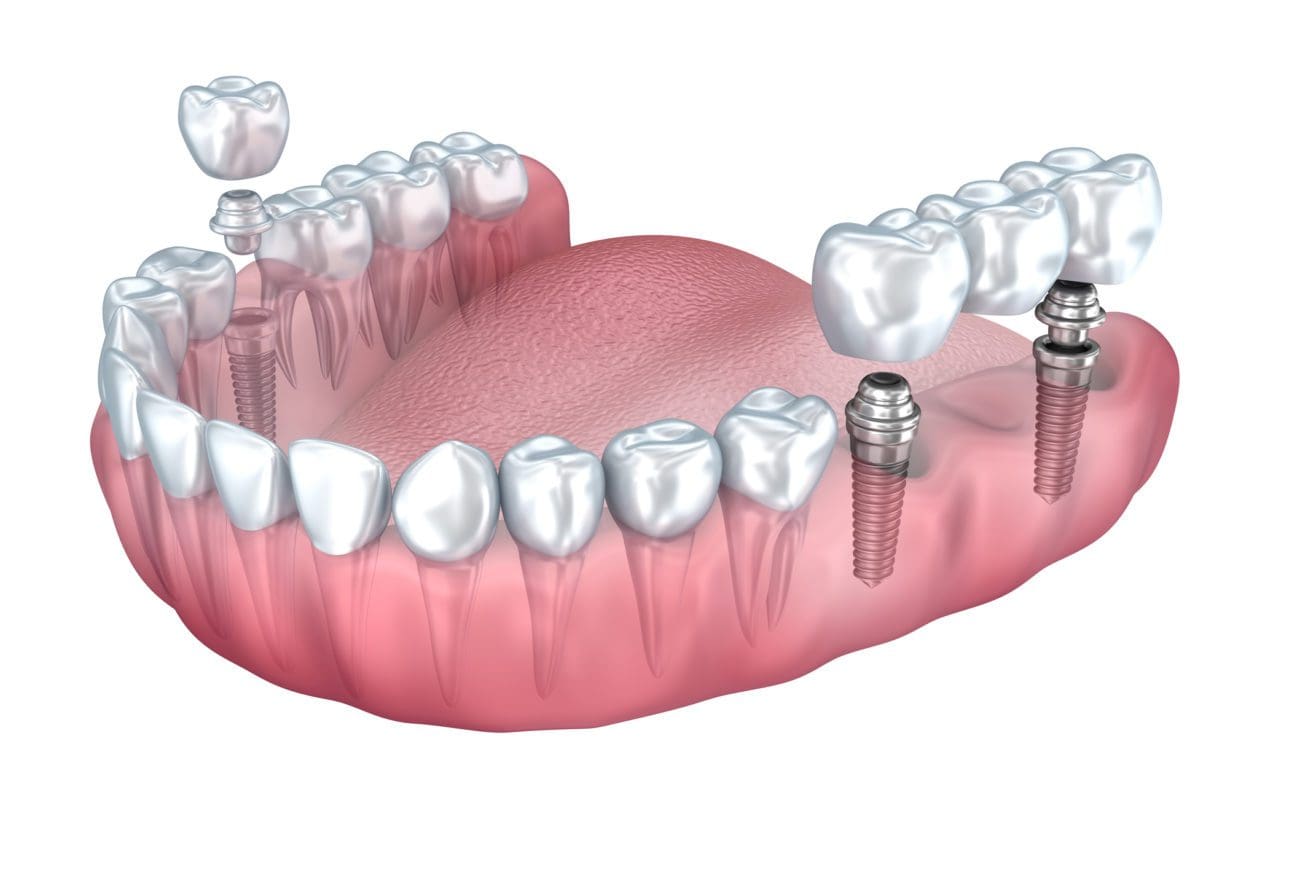The Only Guide for Dental Sense
The Only Guide for Dental Sense
Blog Article
Dental Sense Can Be Fun For Anyone
Table of Contents4 Simple Techniques For Dental SenseDental Sense Fundamentals ExplainedDental Sense for BeginnersSome Ideas on Dental Sense You Need To Know
are medical gadgets surgically implanted into the jaw to restore a person's ability to chew or their look. They give support for artificial (fake) teeth, such as crowns, bridges, or dentures. When a tooth is shed as a result of injury or disease, a person can experience issues such as quick bone loss, defective speech, or adjustments to eating patterns that cause pain.Oral dental implant systems include an oral implant body and oral implant joint and may also include an abutment fixation screw. Front tooth filling. The oral implant body is surgically placed in the jawbone in area of the tooth's origin. The oral implant joint is generally affixed to the implant body by the joint addiction screw and prolongs with periodontals into the mouth to support the attached artificial teeth
(https://us.enrollbusiness.com/BusinessProfile/7028852/Dental%20Sense)Structure of The Dental Implant System picking dental implants, speak with your oral company regarding the possible advantages and threats, and whether you are a prospect for the procedure. Things to take into consideration: Your total health and wellness is an essential consider identifying whether you are a great candidate for dental implants, for how long it will certainly require to recover, and for how long the dental implant might remain in location.
Smoking cigarettes might influence the recovery procedure and decrease the long-term success of the dental implant. The healing process for the implant body may take a number of months or longer, during which time you usually have a short-lived joint in area of the tooth. the dental implant treatment: Carefully follow the oral hygiene instructions provided to you by your dental service provider.
Dental Sense Can Be Fun For Anyone
Implant failing can lead to the need for an additional surgery to repair or replace the dental implant system. Brings back the capability to chew Recovers aesthetic appearance Assists maintain the jawbone from diminishing as a result of bone loss Maintains the health and wellness of the surrounding bone and gums Aids maintain nearby (neighboring) teeth stable Boosts top quality of life Damages to surrounding natural teeth throughout implant positioning Injury to the surrounding cells during surgery, such as sinus opening Injury throughout surgical treatment (for instance, crack of surrounding jawbone) Insufficient function, such as really feeling like the teeth do not attack together typically An experience that the tooth is loose or twisting in position arising from an abutment screw loosening Implant body failing (looseness of the implant body) due to systemic infection, which may be more probable in individuals with unchecked diabetes mellitus due to regional infection in bone and gum tissues supporting the implant body as a result of postponed recovery, which might be most likely in clients that smoke Trouble cleaning up the gum tissues around the dental implant, causing bad oral health Neglected periodontal disease Post-surgical tingling as a result of nerve impingement or damages Constantly notify wellness care carriers and imaging professionals that you have oral implants before any kind of magnetic vibration imaging (MRI) or x-ray procedures.
FDA is not aware of any kind of adverse occasions reported for MRI or x-ray procedures with oral implants. Oral implants systems are usually made from products that comply with global consensus requirements of the International Organization for Standardization (ISO) or ASTM International. These criteria have information of what makes a secure material.

An oral implant is a framework that changes a missing tooth. With screw-like gadgets, the doctor inserts a dental implant right into the jawbone, and it works as a support for a fabricated tooth, called a crown. A device called a joint attaches the artificial tooth to the dental implant. The crown is customized to fit the individual's mouth and match the shade of their teeth.
Get This Report on Dental Sense
Some people are not eligible for dental implant surgical procedure. It is for oral surgeons to operate people with: severe illnessuncontrollable metabolic diseasebone or soft tissue condition or infectionIf these issues are dealt with, an individual can have the surgical procedure. In, oral specialists avoid running on people with: If people with any of the above undergo dental implant surgery, there is a higher threat of the implant stopping working.

Oral implant surgical procedure is a customized procedure. Provide you time to heal. Affix the article and final crown, bridge or denture.
Next off, your surgeon will thoroughly place the dental implant into your jaw. If your dental implant is near the front of your mouth, your dentist will make a short-term tooth for you to wear up until you heal.
The 5-Minute Rule for Dental Sense
Your provider can inform you what to expect in your situation. During the healing phase, your jawbone ought to fuse to the oral implant. This process, called osseointegration, is essential for security and long-lasting success. This process can take anywhere from 3 to nine months. In many cases, it might take longer.
Once your dental implant heals, your dental practitioner can attach the joint (tiny port article) and your final repair (crown, bridge or denture). This typically takes concerning one hour to finish and might call for a second minor surgery. You shouldn't really feel any discomfort during your oral implant procedure due to the fact that your copyright will utilize medication to numb your gum tissues.
Report this page